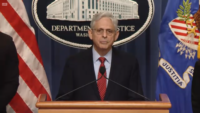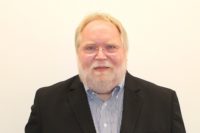Matthew Tejada joined the U.S. Environmental Protection Agency in 2013 as Director of the Office of Environmental Justice. Now a key focus of President Joe Biden's administration under its Justice40 initiative, environmental justice has moved into the conversational and governmental mainstream. ENR talked to Tejada about what changes the initiative will bring to communities, how project planners and developers can address environmental justice concerns and how tndustry professionals can use EPA's environmental justice mapping tool to make the process go more smoothly.
This interview has been edited and condensed for clarity.
ENR: What kind of changes can project planners, engineers and contractors expect to see going forward as environmental justice comes to the fore? What kinds of things do you think that they need to really consider?
Matthew Tejada: The days where we would make decisions that were not really connected to reality— where we would issue a permit and all of our thinking about that permit would be just about that facility as if no other facilities existed, as if there wasn't an already vulnerable population on the flipside of that proposed facility—I think those days are starting to pass us by. When we think about things like permitting or the rules that we write, we're going to start to do those in a universe that analyzes and appreciates the realities of the communities most impacted—which are typically surrounded by pollution sources, typically full of folks living in that community who are more vulnerable than most of the population or most of the rest of the country—and start to make sure that as we make those decisions, they are responsive to the actual reality on the ground, not some fiction that no other pollution exists, so this solution isn’t too bad.
ENR: Where and in and what types of scenarios so far have you seen environmental justice mapping tool EJSCREEN have the most impact?
EPA can go sit down with a state, or a state can get together with a tribe, or a community organizer can sit down with their local government or anybody else and instead of having an abstract conversation, they can look at EJSCREEN and say, why is this red over here? Being able to start from that data-driven, clear and scientifically supported area of having a conversation about environmental justice is hugely powerful.
It has been used for lots of other very practical, programmatic things. When we started responding to some of the natural disasters that have occurred, our emergency response teams, they're opening EJSCREEN to make sure they're going to the places the tool ells them to go to. They're using it in real time.
Whether for building roads bridges or rail lines, plannera scross the U.S. are using it everywhere because EJSCREEN is, in a few seconds, doing a month’s work of data digging and analysis that frankly, a lot of folks wouldn't do because it was too hard trying to figure out how to consider environmental justice on the ground for some actual place-based decision or project.
ENR: You just mentioned planners. Are there other EJSCREEN use cases you see for contractors, engineers and others in construction?
One of the first things it allows you to do is better understand a community and then engage with it focused on a project site locaton. In environmental justice terms, that is absolutely critical. You have to understand where the community is at, its needs and challenges, and its thoughts about the thing you’re thinking about. EJSCREEN gets you to a place immediately where you can have that conversation intelligently, ask very meaningful questions and start to contextualize ideas and thoughts to meet needs of that local community. This is instead of, what has been the practice for far too long, we just make decisions and start doing things on the ground, and local communities find out and they don't like it. Then you have a huge conflict on your hands, and then project gets more expensive. Deadlines start getting missed. You get lawyers involved, they get litigious.
For a lot of stakeholders, but really for the private sector, EJ is oftentimes seen as this dangerous thing that they shouldn't approach because it makes things harder. Our view is that not doing EJ—is what makes things harder. If people actually put the time in up front, you actually make things cheaper and quicker because you're eliminating the fights. You’re eliminating the courts. You're eliminating the protests in a lot of cases.
ENR: Outside of EJSCREEN, have there been any recent changes or plans for changes in how community input is sought and leveraged?
In the 1990s, the big 'aha' in engaging communities, was, oh, we shouldn’t have a public hearing at a downtown hotel in the middle of the day on a Wednesday because folks in the community are never going to go to that hotel. We actually need to have a public hearing in the evening, or on the weekend, and it needs to be in a place where people are comfortable and can access.
Now we're at the point where it's not just enough to create a space for the community to come and engage with us, but we need to provide support to do so. Very few people outside EPA know what the TSCA, FIFRA or CERCLA federal laws are, or know what the niche application is as opposed to the max in the Clean Air Act. If you're gonna engage with us about our decisions, you need to know what those things are so you can engage meaningfully and lift your voice up in a way that we can respond to.
The responsibility for communities with environmental justice concerns lies with us, with the government to make sure that those impacted communities have the capacity and resources they need to sit down at the table and lift up their voices so we can respond..
ENR: Anything else that's important for our readership to know?
I think a lot of times environmental justice is seen, at first encounter, as something that is either too hard, too challenging, somewhat mysterious or maybe even dangerous, and they’re not sure exactly what to do.
I want to make sure folks know that they're not out there alone, that's why there is an EJ program.
We’re not just here to engage with communities, we’re here to engage with everyone. We're here to help. They don't have to figure this out by themselves. It's also important to remember that one of the best things you can do if you're encountering environmental justice and you're just not sure what to do about it, is to talk to the community.
That's a really big point for us too. We are constantly engaging communities, organizations and EJ leaders across the U.S. They're the ones that chart the course for us and describe the horizons. It’s our job then to actually implement that. For anybody else on the outside looking at EJ and wondering what to do about it? The answer is out there in your community. You just have to talk to folks to find out more..
.jpg?1634930472)




Post a comment to this article
Report Abusive Comment